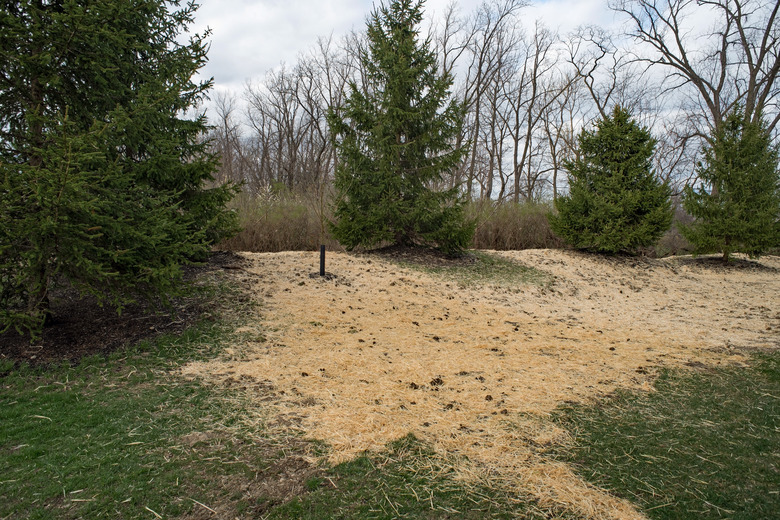What To Cover Lawn Seed With When Planting
Planting grass from seed is very popular with homeowners who want a lush, green lawn without the hassle and expense of installing sod. Growing a new lawn from seed comes with some of its own worries, however.
Birds and other animals can eat grass seed, the seed can fail to germinate if the growing temperature is too hot or cold, and the seed can wash or erode away with spring rains. Covering your newly laid grass seed with some type of mulch can prevent or greatly reduce these ills.
Hay or Straw Mulch
One of the least expensive things to use to cover your seed beds is a thin layer of hay or straw mulch. You can find this material at any local home center. Alternatively, use sawdust. After you sow the grass seed and rake the seed into the soil, apply an even 1/4-inch layer of one of these mulches over the entire seedbed.
While hay is inexpensive and easy to apply, it may be better to use straw or sawdust. Hay is difficult to remove once the grass seedlings have germinated. In addition, it may contain weed seeds that sprout along with the grass.
Polyethylene/Plastic Sheeting
Find plastic or polyethylene sheeting in rolls at your local home center. Lawn sheeting is generally made of slightly thicker plastic that's about 1/16 inch. Select a color other than black to make sure it doesn't get too hot. Polyethylene sheeting is great for keeping moisture in the soil as well.
Plant your grass seed according to the bag's directions and then lightly rake the seed into the soil and water. Stretch the plastic sheeting over the lawn, making sure that sheets overlap 1/2 inch. Weigh it down with rocks and check regularly to make sure that the soil remains moist. Remove it when the seed has germinated.
Plastic sheeting should not be used in the summertime. When it is hot, the temperatures under the sheeting become too hot to allow the grass to germinate properly. Plastic sheeting is best reserved for winter seeding.
Burlap Matting for Slopes
If you are planting grass seed on a slope, a layer of burlap is a good choice to cover the seeds. Burlap sheeting will prevent the grass seed from washing away when planting on a sloped lawn but is not heavy enough to smother it.
An alternative is to use a biodegradable grass seed mat. This type of mat actually contains the seed, so it gets laid down instead of grass seed, not over it. To use erosion matting, plant grass seed according to directions, rake it into the soil, and then cover it with erosion matting and stake it down. Each type of matting will have different directions for use. Ask a lawn-care expert at your local home center if in doubt.
